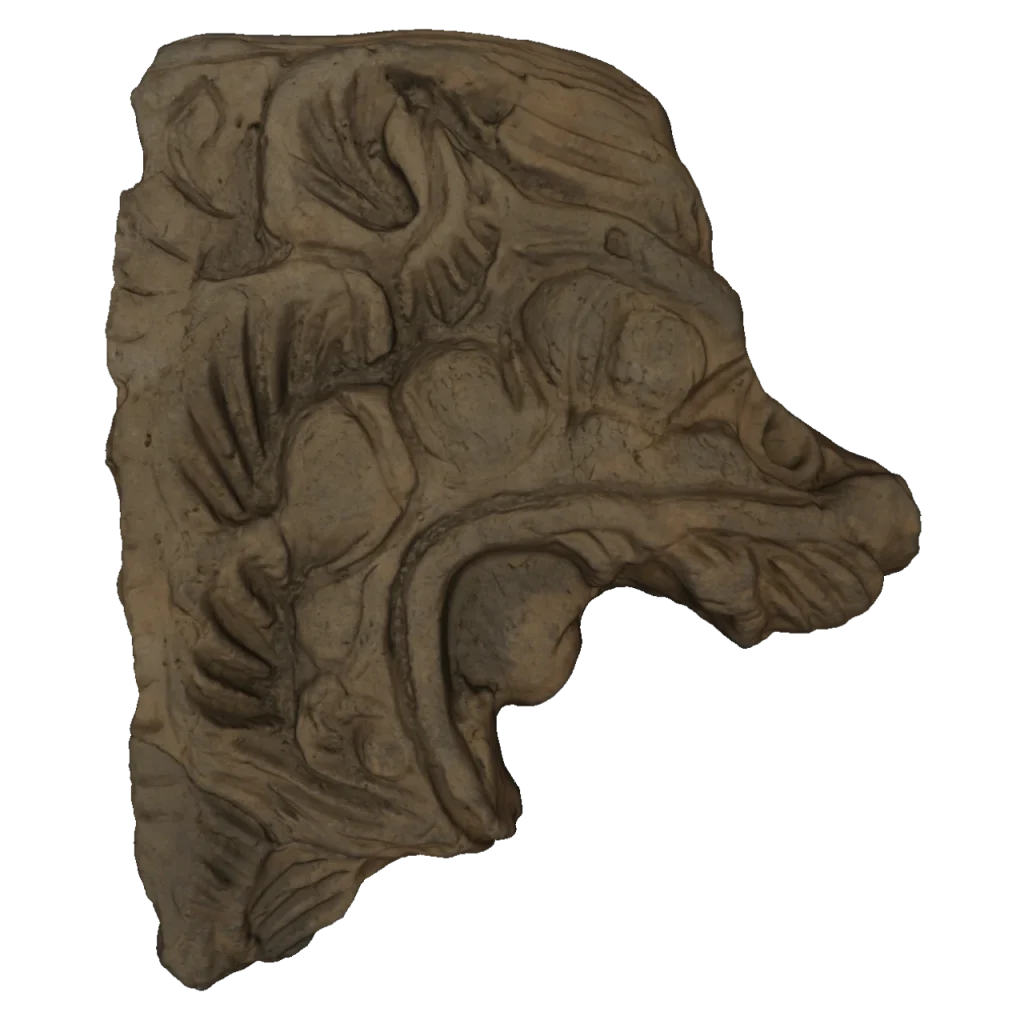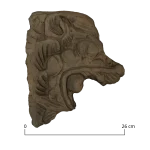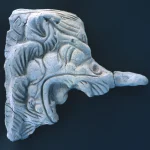
Relief Plate with Depiction of a Dragon Lion
Location Kiln next to the great Buddhist temple of Karakorum
Dating 14th cent.
Epoch Mongolian empire
Material Clay
Technique Burnt
Description
The relief slabs were fired in the kilns to the south-west of the Great Hall and were recovered from the kilns during the excavations. They are part of a unique workshop find that proves that the building material for the Great Hall was produced directly on site. At the same time, they are an example of a sculptural-ornamental style with emphatically ecstatic features. Such slabs were both ornaments and signs that warded off disaster and promised good luck. They probably adorned the friezes of the ridge and eaves cornices of palaces and temples, alternating with tendril ornaments. The heads of the fantastic hybrid creatures of lion and dragon were probably formed with the help of dies and then freehand. Characteristic are the long, hand-sculpted nasal trunks, the wide open mouths, the dissolution of the manes into leaf-like fringe ornaments and hair volutes as well as the emphasis on the fleshy parts and the eyes through high round bumps. The backs were only ever carelessly smoothed. The rough back was presumably used for attachment to the building, e.g. with mortar.
3D Visualisation
3D Model: H. Rohland / DAI
Images: J. Seifert / C. Steindorf / HTWD
Literature
Hüttel, H.-G. (2005) ‘Vier Reliefplatten mit Löwen-Drachen’, in Dschingis Khan und seine Erben: Das Weltreich der Mongolen. München: Hirmer, p. 157. [Four relief panels with lion-dragons', in Genghis Khan and his heirs: The World Empire of the Mongols.]
Franken, C. (2005) ‘Die Brennöfen im Palastbezirk von Karakorum’, in Dschingis Khan und seine Erben. München: Hirmer, pp. 147–149. [The kilns in the palace district of Karakorum', in Genghis Khan and his heirs]


